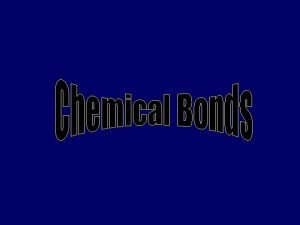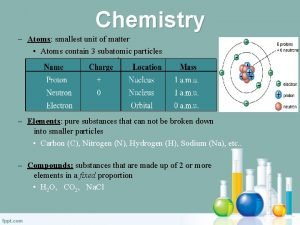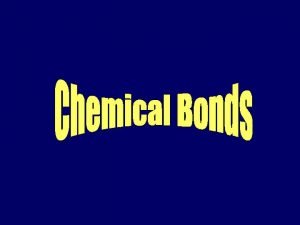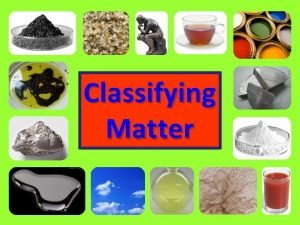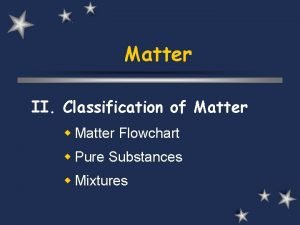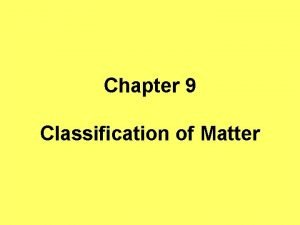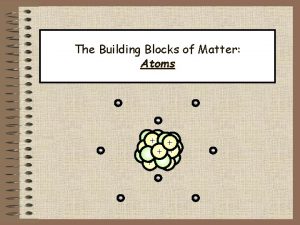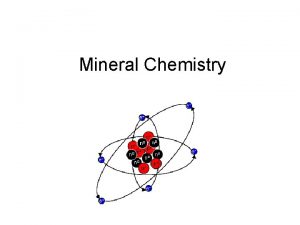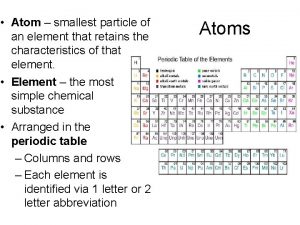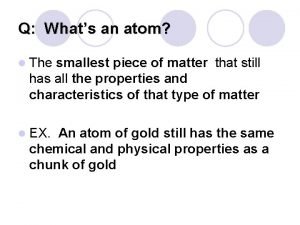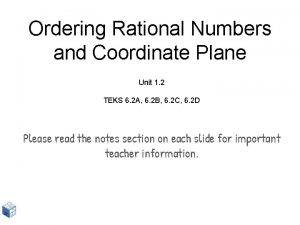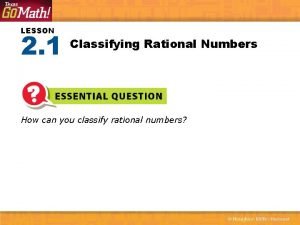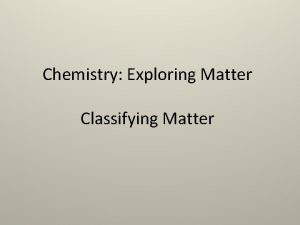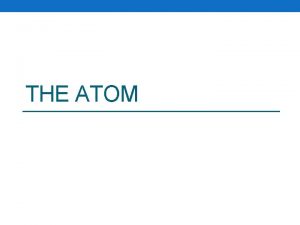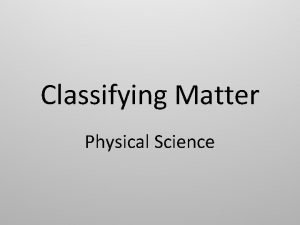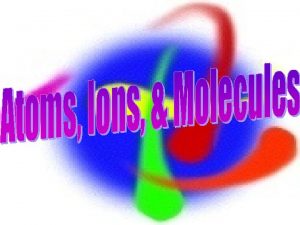Classifying Matter ATOM Atom the smallest unit of


















- Slides: 18

Classifying Matter

ATOM • Atom – the smallest unit of an element that maintains the properties of that element.

Pure Substance • A sample of matter, either a single element or a single compound, that has definite chemical and physical properties Figure 14, Page 22

Elements • A pure substance that contains only one kind of atom • All atoms of the same element have the same atomic number

Compounds • A pure substance that is made up of two or more different elements joined by chemical bonds.

Molecules • The smallest unit of a substance that keeps all of the physical and chemical properties of that substance.

All of the following are molecules, but are they compounds or elements? Element • Br 2 Compound • H 2 O Element • O 2 Element • O 3 Compound • C 12 H 22 O 12

Mixtures • A combination of two or more substances that are not chemically combined. • Examples are air, ice tea, and even cake batter • The proportions of the substances can vary

Homogeneous Mixtures • have a uniform structure or composition throughout • any two samples taken will have the same proportions of ingredients • Examples: Gasoline, air, and syrup

Heterogeneous Mixtures • NOT evenly mixed. • Different regions will have different proportions • Examples: Pulpy Orange Juice, chocolate chip cookie dough, and granite.

Homogeneous and Heterogeneous Mixtures


Separating Mixtures Since mixtures are just physically combined, they can be separated.

Separating Mixtures • Some Methods include: – Filtering – separation of a mixture’s components through differences in particle size – Decanting – a fancy term for separating two components by pouring – Distillation – used to separate two liquids based on their differences in boiling points – Magnetism – used to separate magnetic substances – Evaporation – removing a liquid to leave a solid behind – Centrifuge – separates substances of different densities using a fast rotational motion – Chromatography – Separates two substances by using a mobile phase and a stationary phase

Physical Changes • A change of matter from one form to another without changing the substance itself. • A A • Examples: phase changes, mixtures

Chemical Changes • when one or more substances change into entirely new substances with different properties • A + B C (reactants go to products)

Release or An Unexpected Formation of a Absorption Formation of Color Precipitate of Energy a gas Change (solid)

Chemical or Physical • Frying an egg - Chemical • Boiling Water - Physical • Sanding a wooden plank - Physical • Digesting food - Chemical • Popping a balloon - Physical
 The smallest unit of an element
The smallest unit of an element Chapter 2 section 1 classifying matter answers
Chapter 2 section 1 classifying matter answers Are atoms the smallest unit of matter
Are atoms the smallest unit of matter Helium is
Helium is Classifying matter quiz
Classifying matter quiz Flowchart of how matter is classified
Flowchart of how matter is classified Worksheet classification of matter
Worksheet classification of matter Matter is classified as a
Matter is classified as a Paint classification of matter
Paint classification of matter Graphic organizer matter
Graphic organizer matter Classification of matter flowchart
Classification of matter flowchart Classification of matter quiz
Classification of matter quiz Concept map properties of matter
Concept map properties of matter The smallest building block of matter
The smallest building block of matter Whats the smallest particle of matter
Whats the smallest particle of matter Whats the smallest particle of an element
Whats the smallest particle of an element What's the smallest piece of an element
What's the smallest piece of an element Rational numbers graphic organizer
Rational numbers graphic organizer Classifying real numbers unit 1 lesson 2
Classifying real numbers unit 1 lesson 2
